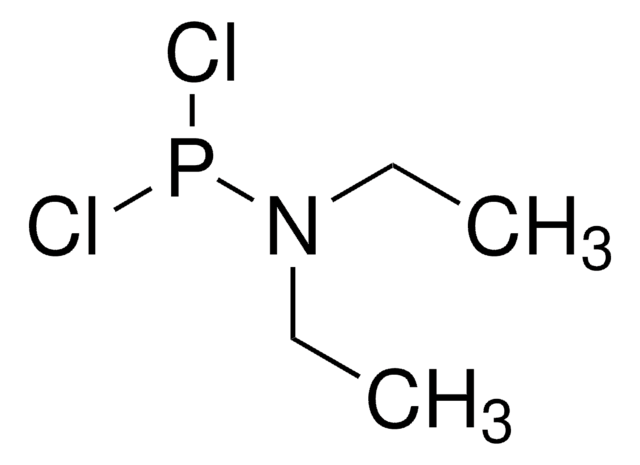According to The Sigma-Aldrich Handbook of Stains, Dyes and Indicators, Rose Bengal is soluble in water at 100 mg/mL, ethanol at 30 mg/mL and 2-methoxyethanol at 60 mg/mL. Conn's Biological Stains (10th Edition) states Rose Bengal has a solubility of 36% in water and 8% in ethanol.
330000
Rose bengal
Dye content 95 %, ≥96% (HPLC)
Sinonimo/i:
4,5,6,7-Tetrachloro-2′,4′,5′,7′-tetraiodofluorescein disodium salt, Acid Red 94, Bengal Rose B sodium salt, Rose Bengal sodium salt
Scegli un formato
Scegli un formato
About This Item
Prodotti consigliati
Livello qualitativo
Saggio
≥96% (HPLC)
Stato
solid
Composizione
Dye content, 95%
tecniche
titration: suitable
Colore
red to brown
ε (coefficiente d’estinzione)
≥ 3000 at 350-354 nm
≥12000 at 311-315 nm
≥32000 at 262-266 nm
≥32000 at 513-517 nm
≥98000 at 546-550 nm at 0.04 g/L (H2O + 1ml 1% Na2CO3)
applicazioni
diagnostic assay manufacturing
hematology
histology
Temperatura di conservazione
room temp
Stringa SMILE
[Na+].[Na+].[O-]C(=O)c1c(Cl)c(Cl)c(Cl)c(Cl)c1C2=C3C=C(I)C(=O)C(I)=C3Oc4c(I)c([O-])c(I)cc24
InChI
1S/C20H4Cl4I4O5.2Na/c21-10-8(9(20(31)32)11(22)13(24)12(10)23)7-3-1-5(25)16(29)14(27)18(3)33-19-4(7)2-6(26)17(30)15(19)28;;/h1-2,29H,(H,31,32);;/q;2*+1/p-2
UWBXIFCTIZXXLS-UHFFFAOYSA-L
Cerchi prodotti simili? Visita Guida al confronto tra prodotti
Descrizione generale
Codice della classe di stoccaggio
11 - Combustible Solids
Classe di pericolosità dell'acqua (WGK)
WGK 3
Punto d’infiammabilità (°F)
Not applicable
Punto d’infiammabilità (°C)
Not applicable
Dispositivi di protezione individuale
Eyeshields, Gloves, type N95 (US)
Scegli una delle versioni più recenti:
Certificati d'analisi (COA)
Non trovi la versione di tuo interesse?
Se hai bisogno di una versione specifica, puoi cercare il certificato tramite il numero di lotto.
Possiedi già questo prodotto?
I documenti relativi ai prodotti acquistati recentemente sono disponibili nell’Archivio dei documenti.
I clienti hanno visto anche
-
What is the solubility of Rose Bengal, Product 330000?
1 risposta-
Utile?
-
-
What types of applications can Product 330000, Rose bengal be used for?
1 risposta-
According to the literature, Rose bengal has been used in a used in neutrophil adherence test and as a generator of singlet oxygen when exposed to laser energy. See: McKinnon, J. , Expt. Med., 164, 1864, (1986) and Gamble and Vadas, Science, 242, 97, (1988).
Utile?
-
-
What is the Department of Transportation shipping information for this product?
1 risposta-
Transportation information can be found in Section 14 of the product's (M)SDS.To access the shipping information for this material, use the link on the product detail page for the product.
Utile?
-
-
What is the quantum yield of Rose bengal, Product 330000?
1 risposta-
According to the literature, the quantum yield of Rose bengal is 0.11. See: Seybold, P.G., et al., Calorimetric, photometric and lifetime determinations of fluorescence yields of fluorescein dyes, Photochem. Photobiol., 9, 229-242 (1969).
Utile?
-
Filtri attivi
Il team dei nostri ricercatori vanta grande esperienza in tutte le aree della ricerca quali Life Science, scienza dei materiali, sintesi chimica, cromatografia, discipline analitiche, ecc..
Contatta l'Assistenza Tecnica.









